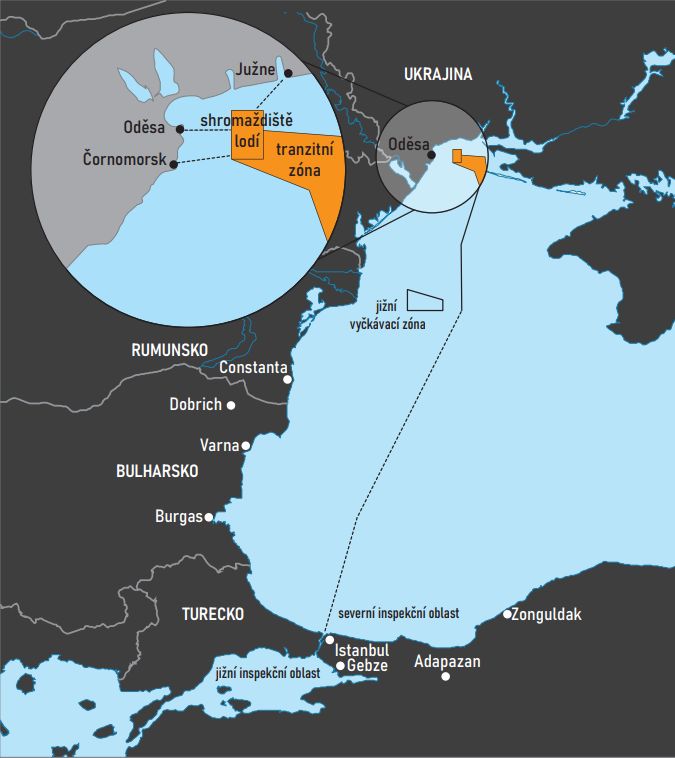03 GRAIN ROUTE
Before the invasion, Ukraine exported 90% of its agricultural exports by sea. After the blockade of Ukrainian ports in February 2022, exports had to be redirected by rail and road
Solidarity corridor
Following the blockade of Ukrainian ports on 13 February 2022, maritime exports from Ukraine were almost completely halted. In peacetime, Ukraine exported more than 90% of its agricultural products through Black Sea ports, with 5–7 million tonnes of produce shipped each month. In response to the blockade, the European Union organised a "solidarity corridor" to transport agricultural products across Ukraine's western border. This transport was complicated by the difference in track gauges, requiring the reloading of goods. Exports were also secured by road and boat transport across the Danube Delta to Romanian ports.
Through these "solidarity routes", Ukraine has exported more than 40 million tonnes of agricultural products.
Grain agreement
From the start of the blockade until August 2022, all exports, including agricultural products, went through Ukraine's western border. This changed on 22 July, when Turkey and the UN brokered the "Black Sea Grain Agreement", which unblocked three Ukrainian ports (Odesa, Chornomorsk and Yuzhne) for agricultural exports. Ukraine and Russia signed mirrored but separate documents. The Black Sea initiative helped restore export levels to pre-war figures. Russia attempted to negotiate sanctions relief and enforce other demands. Russian inspections caused significant delays, with grain ships queuing for up to a month. On 17 July 2023, Russia withdrew from the agreement. Despite these challenges, nearly 33 million tonnes of products were exported through the grain corridor from 1 August 2022 to 17 July 2023.
Diesel-electric submarine B-262 Stary Oskol is part of the Russian Black Sea Fleet.
The blockade of ports is enforced not only by surface and underwater vessels but also by naval mines, which can float on the surface or be anchored below the surface.
There are 12 railway crossings for freight trains in the Ukrainian border area, providing access to the western neighbours (Poland, Slovakia, Hungary, Romania and Moldova).
A railway border crossing near the Ukrainian town of Chop features standard-gauge tracks in three directions (to Hungary, Slovakia towards Košice and via Vynohradiv to Romania) and wide-gauge tracks in four directions: to Zagona, Čierna nad Tisou and two tracks to the Ukrainian inland.

Cargo ship routes in the Black Sea Grain Initiative from Ukraine to the world
Once the ships were loaded, they proceeded to the so-called inspection zone, where they were inspected by representatives of the Russian Federation, Ukraine, Turkey and the United Nations. Following inspections, the ships travelled through the Bosphorus Strait and onwards to global destinations.
A total of 47% of Ukrainian food exports go to wealthy countries (e.g. Spain, Italy and the Netherlands), while 26% are exported to developed countries such as Turkey and China. The remaining 27% go to undeveloped countries, including Egypt, Kenya and Sudan. Between August and December 2022, 380,000 tonnes of wheat were exported to Djibouti, Ethiopia and Yemen.
Exports from Ukraine by commodity (in millions of tonnes)
Exports under the Grain Agreement from Ukraine by country (in millions of tonnes)

Black Sea Grain Corridor route

Exports from Ukraine by commodity (in millions of tonnes)



